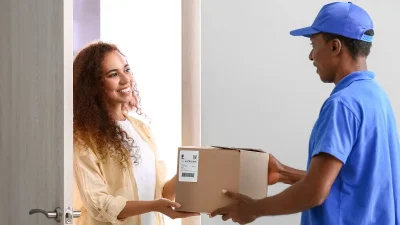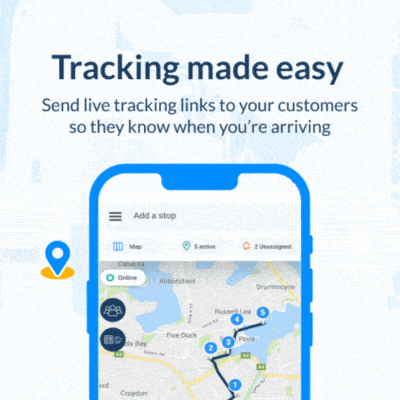The global online food delivery market is expected to reach $192.16 billion in 2025, as companies continue to resume operations and adapt to the new consumer demand influenced by the pandemic. As more consumers lean toward the convenience and safety of online shopping, business owners must carefully consider whether to outsource delivery to a third-party logistics company or invest in setting up their own in-house delivery.
There is no one size fits all solution here. Owners must determine which method helps them save time and money. Businesses must also meet customer expectations for efficient, reliable, and quality service for deliveries.
Advantages Of Outsourcing
In some circumstances, it makes sense to outsource delivery to a third-party logistics company.
Expanded Reach: A new start-up in need of more exposure might profit from a listing on a platform like Instacart, initially. But as it grows, an in-house delivery system is likely to be more cost-effective and beneficial over time.
Access to Expertise: Small business owners can benefit from supply chain experts when they outsource delivery to companies that specialize in managing supply chains for multiple businesses.
Scalability: Third-party logistics companies can easily scale shipping higher or lower whenever the need arises, without wasting resources.
Many outside influences can affect sales for a business from one year to the next. Environmental issues, cultural movements, politics – or a public health crisis like a global pandemic can have unforeseen consequences that may cause a sudden spike in shipping or a sudden decline.
Drawbacks to Outsourcing
Retailers often choose third-party delivery services because they appear to be less expensive than setting up an in-house delivery service. However, by servicing multiple clients, the same business structure that allows these third-party companies to lower their operating costs creates a conflict of interest for individual retailers.
Self-Interests Hurt Retailers
Just look at the marketplace created by a company like Instacart. The platform makes it incredibly convenient for customers to choose a competitor for their next delivery without blinking an eye.
The pandemic took a toll on rideshare companies such as Uber, which had to adapt by focusing on delivery services like Uber Eats. But when customers get hijacked and rerouted by delivery companies that put their own profits ahead of the businesses they serve, relationships can sour.
Damage to the Brand
As demand for home-delivered goods continues to grow, consumers expect a high level of convenience, efficiency, reliability, and satisfaction. Delivery options play a huge role in the buying decision of 93% of online shoppers, with 46% reporting they will bounce without flexible options.
When customers are left dissatisfied with a bad delivery experience, it’s unlikely they’ll use that service again in the future.
Branding consistency suffers as well when consumers become more familiar with the name and logo of the delivery service, instead of the retailer.
Retail businesses suffer the most when third-party delivery companies drastically mark up the price of the product, which can jeopardize the sale from even happening.
Unsustainable Costs
The pandemic exposed even more potential problems between struggling restaurants and the companies delivering the food, who dominate the search engine results online.
Hidden marketing costs and processing fees can eat away as much as 30% of the profits of small business owners who may be operating at half their capacity due to COVID-19. It creates the opposite of a win-win situation.
Drawbacks to In-House Delivery
The biggest obstacle for most businesses is the cost of setting up in-house delivery. Typical expenses include:
Owning or leasing commercial vehicles – $800 – $2500 per month
• Insurance, fuel, and maintenance
• Hiring warehouse and shipping staff for eCommerce retailers
• Training the staff
• Software for delivery management – typically charged per month per vehicle but getting a quote is quick and easy
Delivery management software helps businesses save time and money by optimizing the most efficient routes for delivery.

How to Save Time and Money with In-House Delivery
Depending on the type of business, many owners won’t need to invest in a fleet of vehicles or even the cost of one commercial truck. They can reduce start-up costs significantly by hiring a couple of delivery drivers equipped with delivery management software, who can use private vehicles for delivery.
Keep More Profit
Do the math by comparing the cost of third-party delivery service with the cost of hiring two full-time delivery drivers. Take the average yearly sales of a restaurant at about 1.5 million dollars. Sales for delivery in the pandemic era account for about 40% of the total. That comes to about 600K in delivery sales.
The average salary for delivery drivers is around 40,000-45,0000. Switching to in-house delivery would result in a significant amount of savings, leaving plenty of room to factor in variable costs such as fuel.
Stay in Control of Customer Experience
With most outsourced delivery, business owners have no direct contact with drivers. There’s no way to alert customers of potential delays or provide drivers with special instructions when customers call in.
In-house delivery keeps lines of communication open between the business and drivers. This is crucial for improving the reliability of the delivery.
Build Quality, Lasting Relationships, and Earn Customer Loyalty
Before the pandemic, customers built relationships with business owners and staff by frequenting their restaurants or stores in person and having face-to-face conversations. Now that more people are staying home and ordering food and products online, the only person that’s there to represent the brand is the delivery driver.
In-house drivers can be encouraged to interact and engage with customers they get to see on a regular basis, increasing customer loyalty for the brand.

Improve Your Delivery With Locate2u!
The pandemic has drastically altered consumer behavior. People now expect quick and quality service when ordering goods and services online. If you’re wanting to improve the quality of your deliveries, then click here to learn more about how Locate2u can help.














